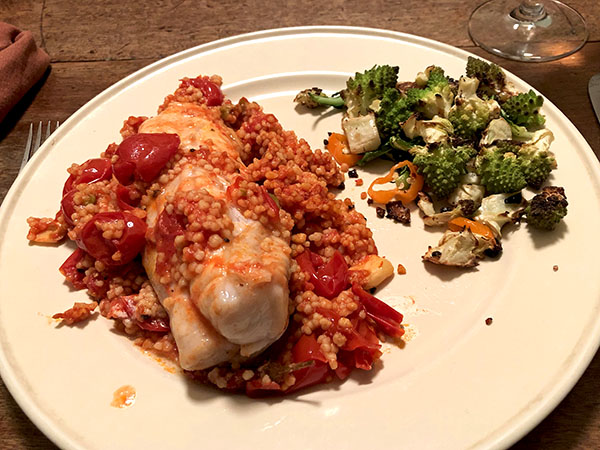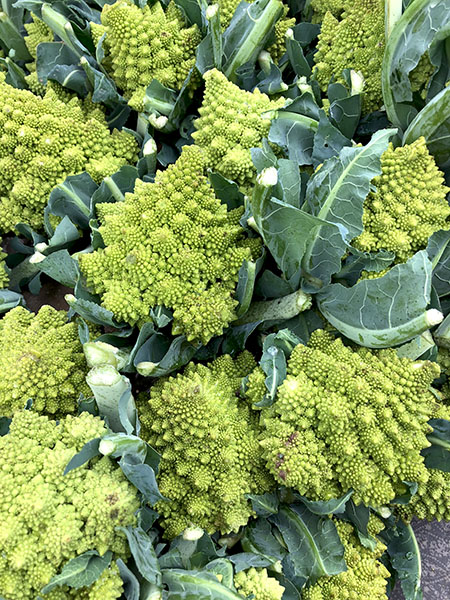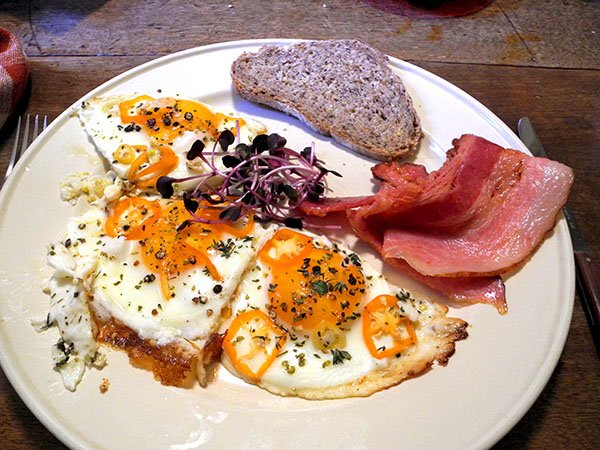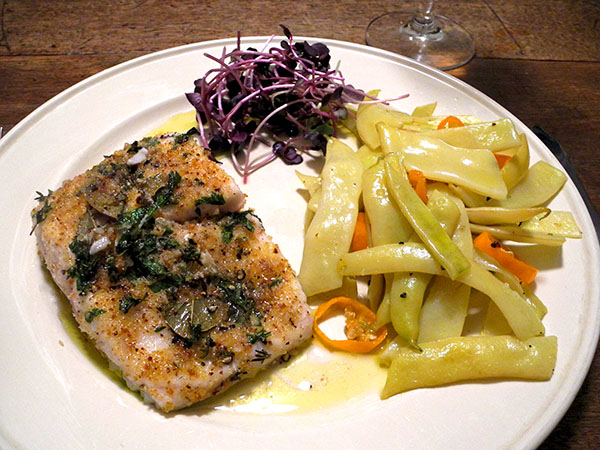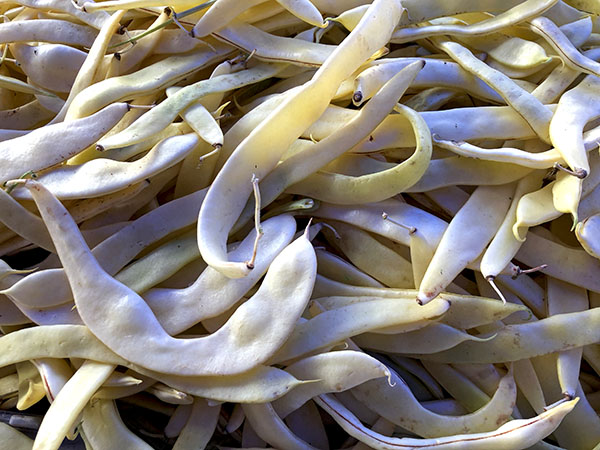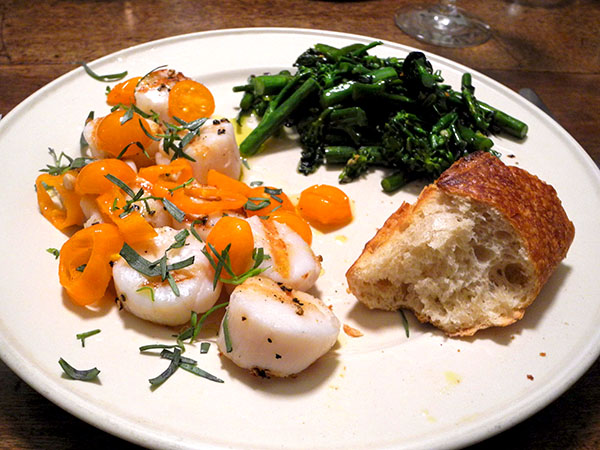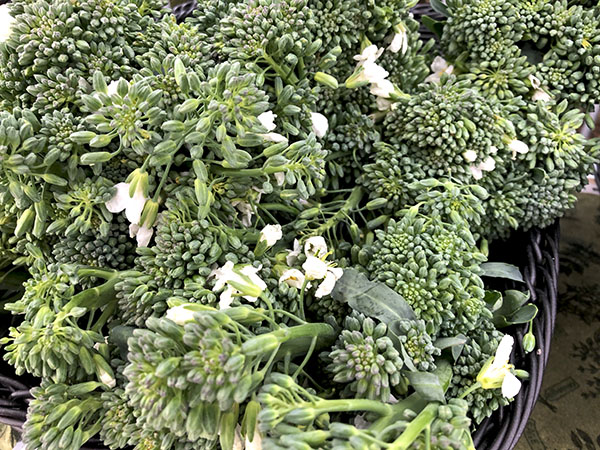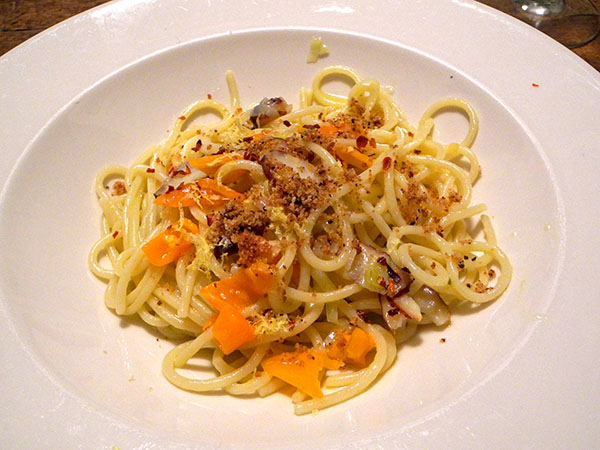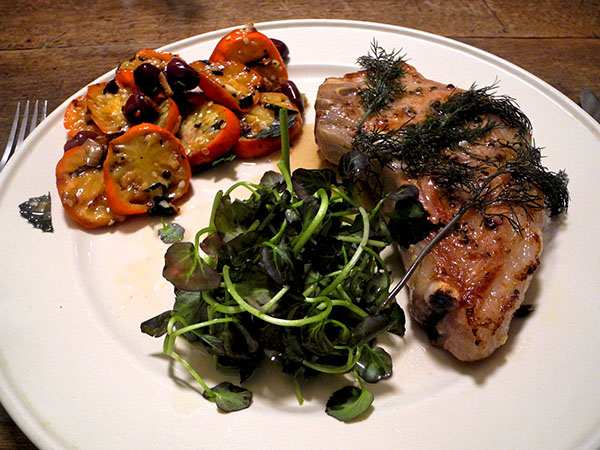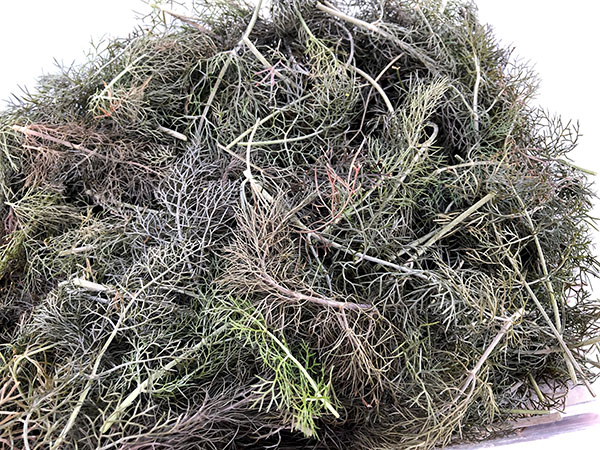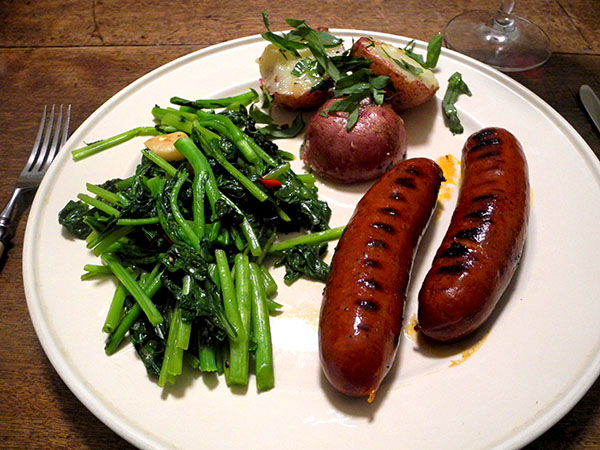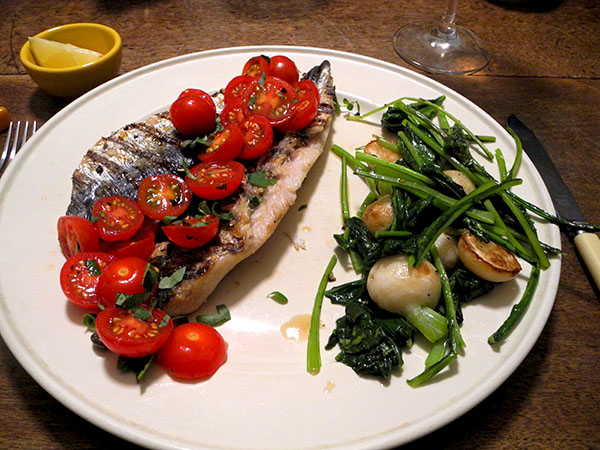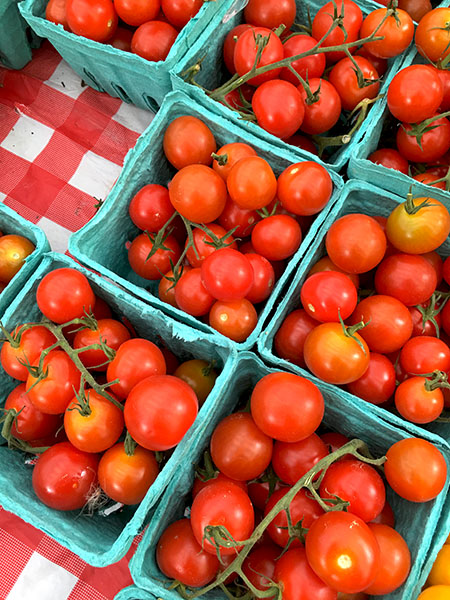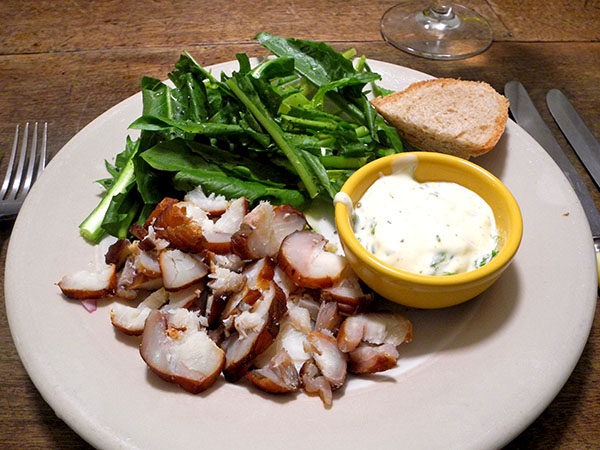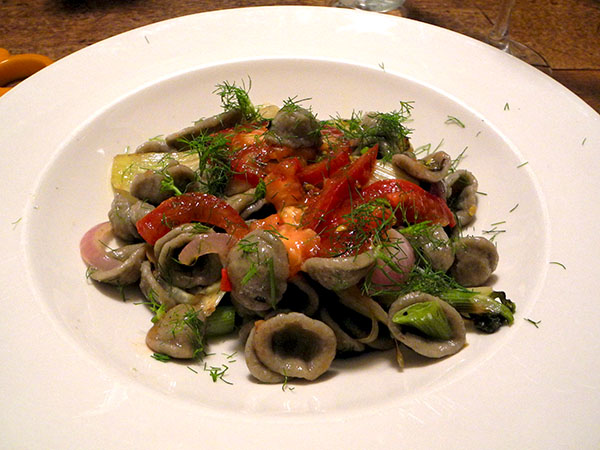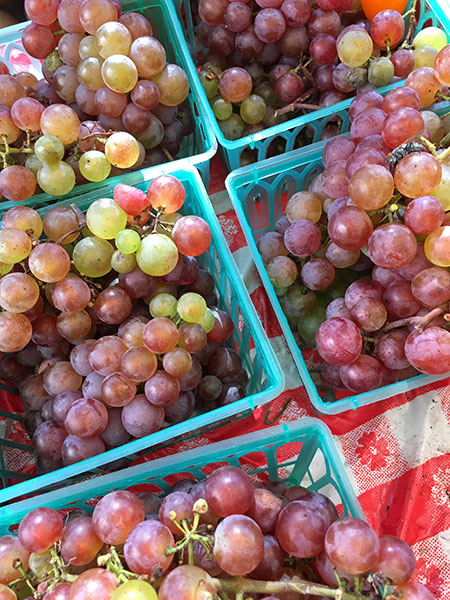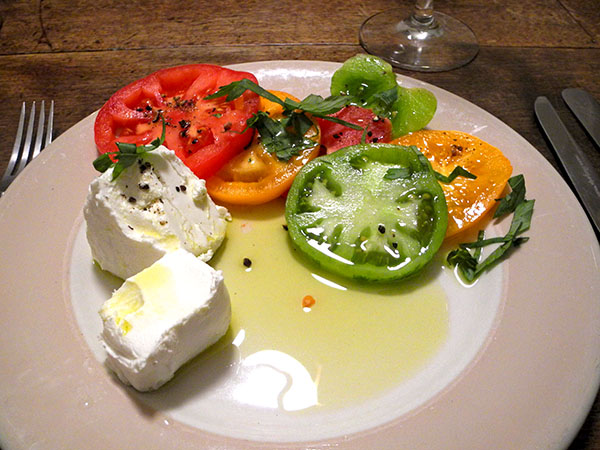
We had a guest, almost a last-minute guest, last night. I did however have enough notice to be able to purchase 3 servings of fish at the Union Square Greenmarket earlier in the day, and also one beautiful head of radicchio larger than one I would normally bring home.
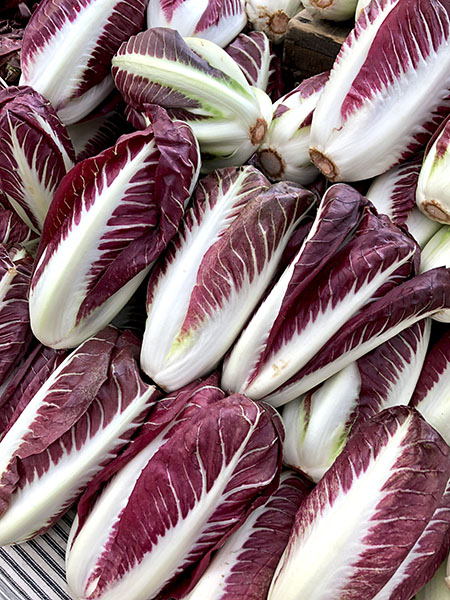
It all went swell.
It was also one of the most relaxed and pleasant small dinner parties either of us can remember, especially considering the fact that we had only met Andrew a few days earlier. Maybe I’m finally getting the hang of this thing.
Or maybe it was just our affable Australian artist, Andrew Nicholls.
We sat down to a salad whose elements seem to have been waiting for just this occasion. Barry had brought home a soft Spanish goat cheese a few days before, to enjoy with the tomatoes which were only now fully ripened.
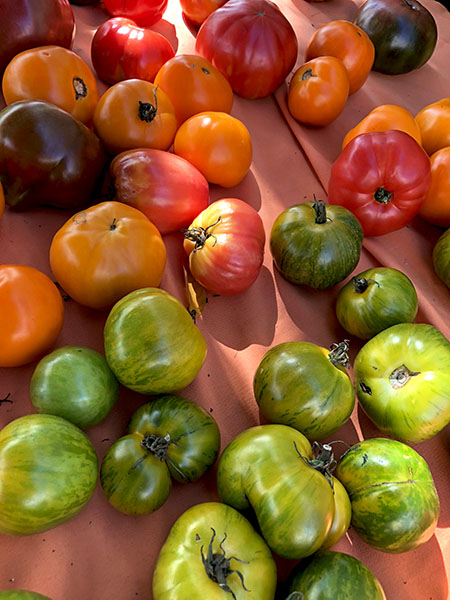
- one knob of a Spanish goat goat milk cheese, ‘Capricho de Cabra‘, from Whole Foods Market, brought to room temperature and arranged on the plates with sliced ripe heirloom tomatoes in 3 different colors from Berried Treasures Farm which were seasoned with sea salt and freshly-ground back pepper, everything sprinkled with chopped lovage from Keith’s Farm, and drizzled with an excellent Puglian olive oil, Alce Nero DOP ‘Terra di Bari Bitonto, from the Flatiron Eataly Market
- slices of an Eric Kayser ‘baguette monge’ [missing in the picture above]
- the wine was an Italian (Sicily) white, Corvo Bianco 2015, from Philippe Liquors and Wine, once we had finished the aperitif wine, a New Mexican (Sierra County) sparkling white, Gruet Brut NV, from Astor Wines & Spirits
The main course was also very Mediterranean, although (like the first, with the exception of that Spanish cheese) the ingredients were almost entirely local.
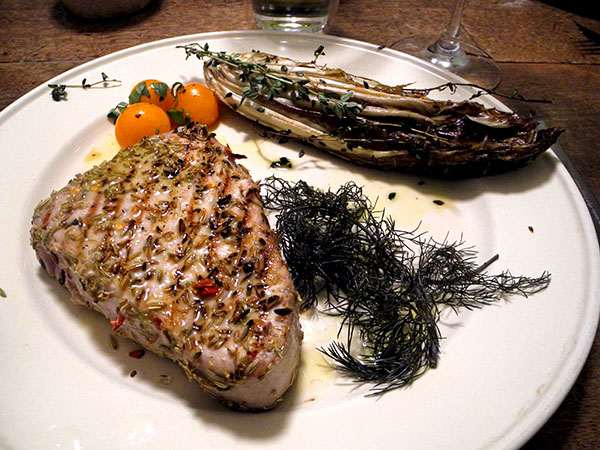
- three 8-ounce Yellowfin tuna steaks from Pura Vida Seafood, rubbed, tops and bottoms, with a mixture of a dry Sicilian fennel seed from Buon Italia that had been crushed in a mortar and pestle along with a little dried peperoncino Calabresi secchi from Buon Italia, then seasoned with sea salt and freshly-ground black pepper, pan-grilled above a medium-high flame (for only a little more than a minute or so on each side), finished on the plates with a good squeeze of the juice of an organic lemon from Trader Joe’s Market and some olive oil, served with bronze micro fennel from Windfall Farm
- one large (exactly one pound) head of Treviso radicchio from Campo Rosso Farm, washed, the liquid drained and wiped off, cut lengthwise into four sections, one of them wrapped and returned to the crisper for another day, arranged one cut side up on a medium Pampered Chef unglazed ceramic oven pan (after securing the leaves by wrapping each with string), covered with lots of thyme branches from Phillips Farm, seasoned generously with sea salt and freshly-ground black pepper, drizzled with 2 tablespoons of olive oil, baked in a pre-heated 400º oven for 12 minutes or so, turned to the other cut side and returned to the oven for 8 or 9 minutes, then turned uncut side up and drizzled with one more tablespoon of oil, baked for about 2 minutes more, arranged on the plates, garnished with a few fresh thyme branches
- half a dozen ripe Sun Gold tomatoes from Franca Tantillo’s Berried Treasures Farm, rolled around for a minute or so, with a bit of olive oil inside a 200-year-old enameled cast iron porringer (I love using that thing), seasoned with sea salt and ground black pepper, sprinkled with a bit of lovage that remained from that which had been chopped for the first course [the tomatoes were introduced largely for the color they could add to the plate]
- the wine was a Spanish (Rias Baixas) white, Martin Codax Albarino 2016, from Philippe Liquors and Wines
There was a dessert, imagined and executed pretty much on the spot, since I found no berries at the Greenmarket that day, and I had not prepared for anything else.
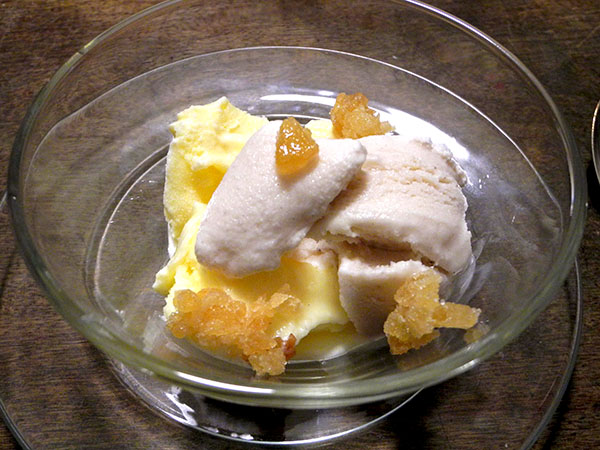
- a small scoop of some terrific, very rich Riverine Ranch Water Buffalo Sweet Cream Ice Cream from the farmer’s stall in the Union Square Greenmarket, topped by a small scoop of Talenti Vanilla Bean Gelato from Whole Foods Market, drizzled with some Toschi Orzata Orgeat syrup, finished with some chopped candied ginger sprinkled on top
- the music through much of the meal was from the recordings included in the book, ‘Lead Kindly Light‘, described as a “176-page hardcover, clothbound book with 2 CDs featuring recordings of Rural Southern Music: Old Time, String Band Music from Appalachia, extremely rare Country Blues and African American gospel singing from 1924-1939”; we had pulled out the book and the compact discs during dinner after we learned of our guest’s interest in the culture and music of that era, and area
